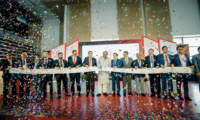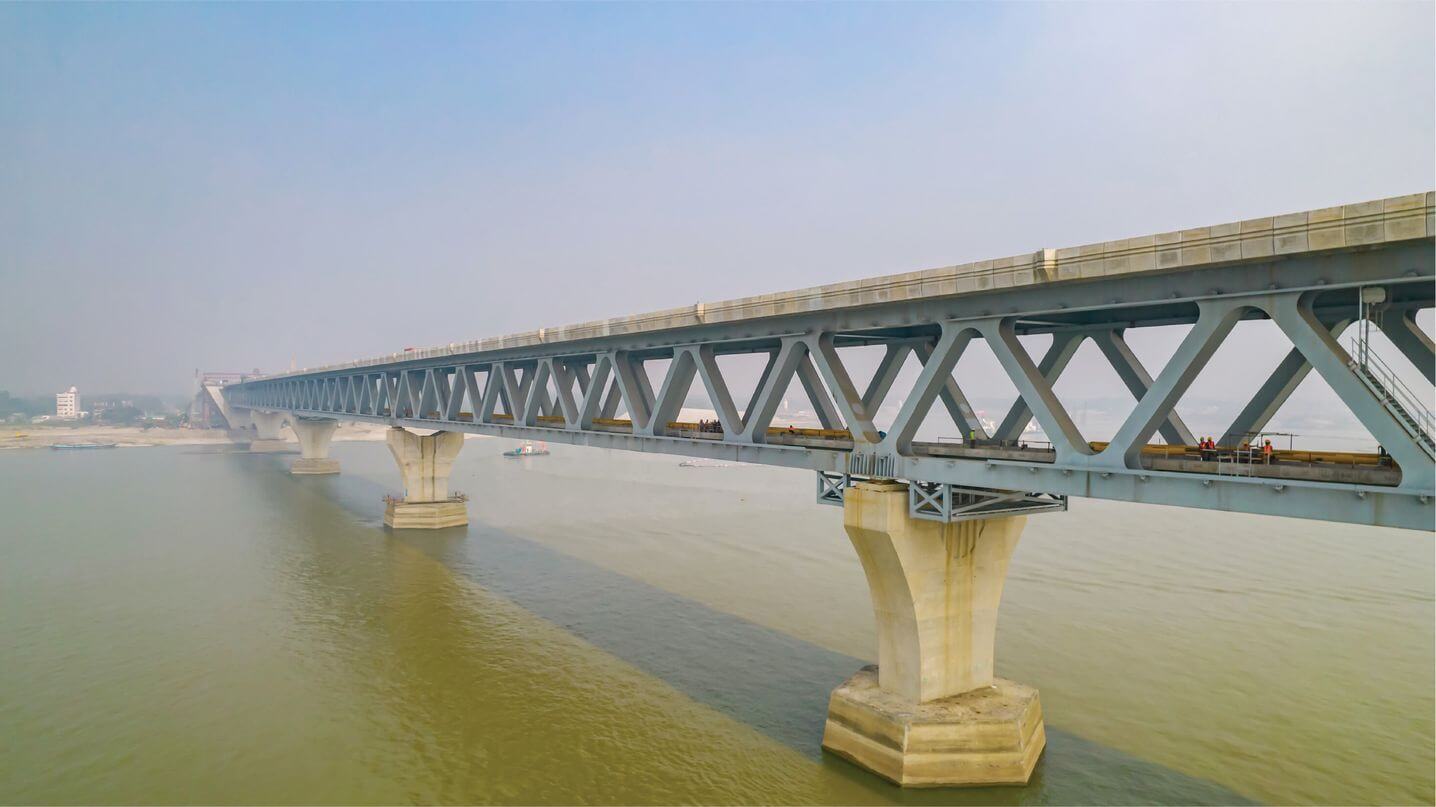
The opening of the Padma Bridge has created the scope for a new wave of investment in the country’s south and south-western region. The region’s easier road communications with the rest planned and tourism sector entrepreneurs are hoping for a business boom surrounding Kuakata sea beach and the Sundarbans. Thus, the bridge has offered a new economic corridor in the making.
Economists and business leaders believe with remarkable improvement in road network though the bridge trade and business in the region would expand rapidly, raising the people’s income, creating jobs and eradicating poverty. The Padma Bridge is also expected to bring about a massive change in the entire economy. The Ministry of Road Transport and Bridges believes the economic corridor surrounding the Padma Bridge and its adjacent areas would increase the country’s GDP (gross domestic product) growth by 1.27 percentage point. The southern region’s economy will grow at a higher pace. Predicting a higher GDP growth for the Padma Bridge, the Asian Development Bank (ADB) said the rate of poverty reduction will be accelerated by 0.84 per cent every year.

However, as many as 53 upazilas out of 133 upazilas in 21 districts on the south-western side of the bridge are of high concentration of poverty, according to Bangladesh Bureau of Statistics (BBS) poverty map. Another 42 upazilas are in the medium poverty risk category and 38 in low poverty risk category. Economist and chairman of Palli Karma-Sahayak Foundation (PKSF) Quazi Kholiquzzaman Ahmad said small entrepreneurs are more enthusiastic about the Padma Bridge and they should be provided with opportunity to make investment and various supports such as gas and electricity supply should be ensured at affordable costs. He observed that the bridge has jointed the southern belt with the rest of the country.
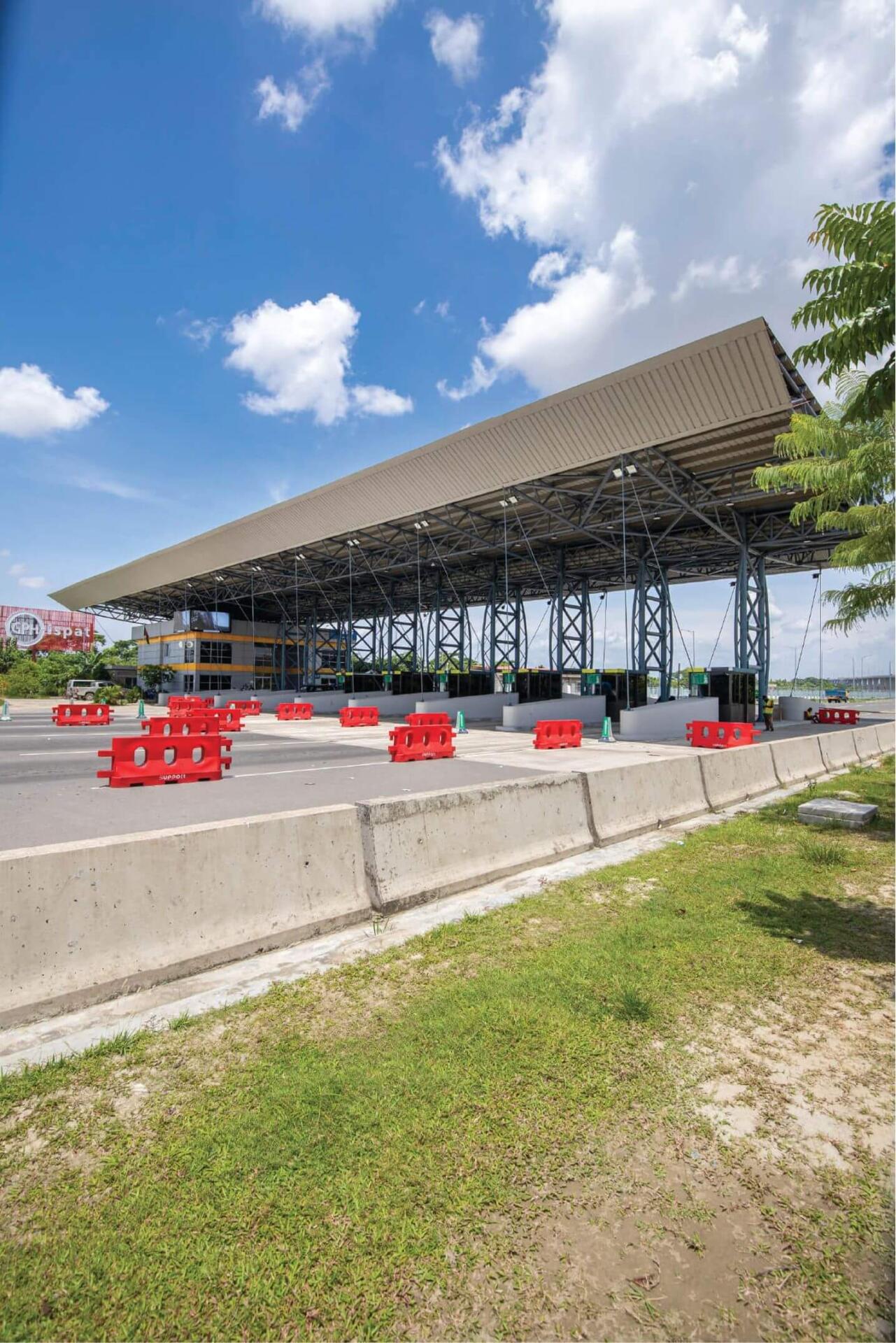
The bridge will result in smooth transportation of farm produces from the region, according to Implementation, Monitoring and Evaluation Division (IMED) of the Ministry of Planning. It said farmers’ income will increase 15-20 per cent since direct connections between farmers and the market forces will be established. Transport sector insiders added the time for transportation of goods from Benapole to Dhaka would come down to 6-7 hours from 24-36 hours.
The southern region was attractive for low-cost transport of goods by river routes but longer time and uncertainity in ferry services earlier discouraged the entrepreneurs from taking business initiatives. The Padma Bridge has now created the scope for big companies to come forward with investment projects in the region. The companies that have shown interest in setting up factories in the region include Sheltech, Pran-RFL, TK Group, Envoy Group, Hameem Group, Mir Group, Karim Group and Opsonin Pharma.
Bangladesh Economic Zones Authority (BEZA) has unveiled a master plan on Padma Bridge that would directly benefit Dhaka, Khulna and Barisal divisions. It is taking steps to establish 17 new Economic Zones (EZ) in 21 districts of the three divisions.
In the 1960s, Khulna became one of the few industrial hubs of the country but it has subsequently lost the glory. However, after the launch of Padma Bridge, Khulna is drawing attention of the investors. Abdus Salam Murshedi MP, president of Bangladesh Exporters’ Association (BEA) and former president of BGMEA said, “I definitely want to use this opportunity. I want to set up a new garment factory in Khulna. I also encourage others to invest in the region.”
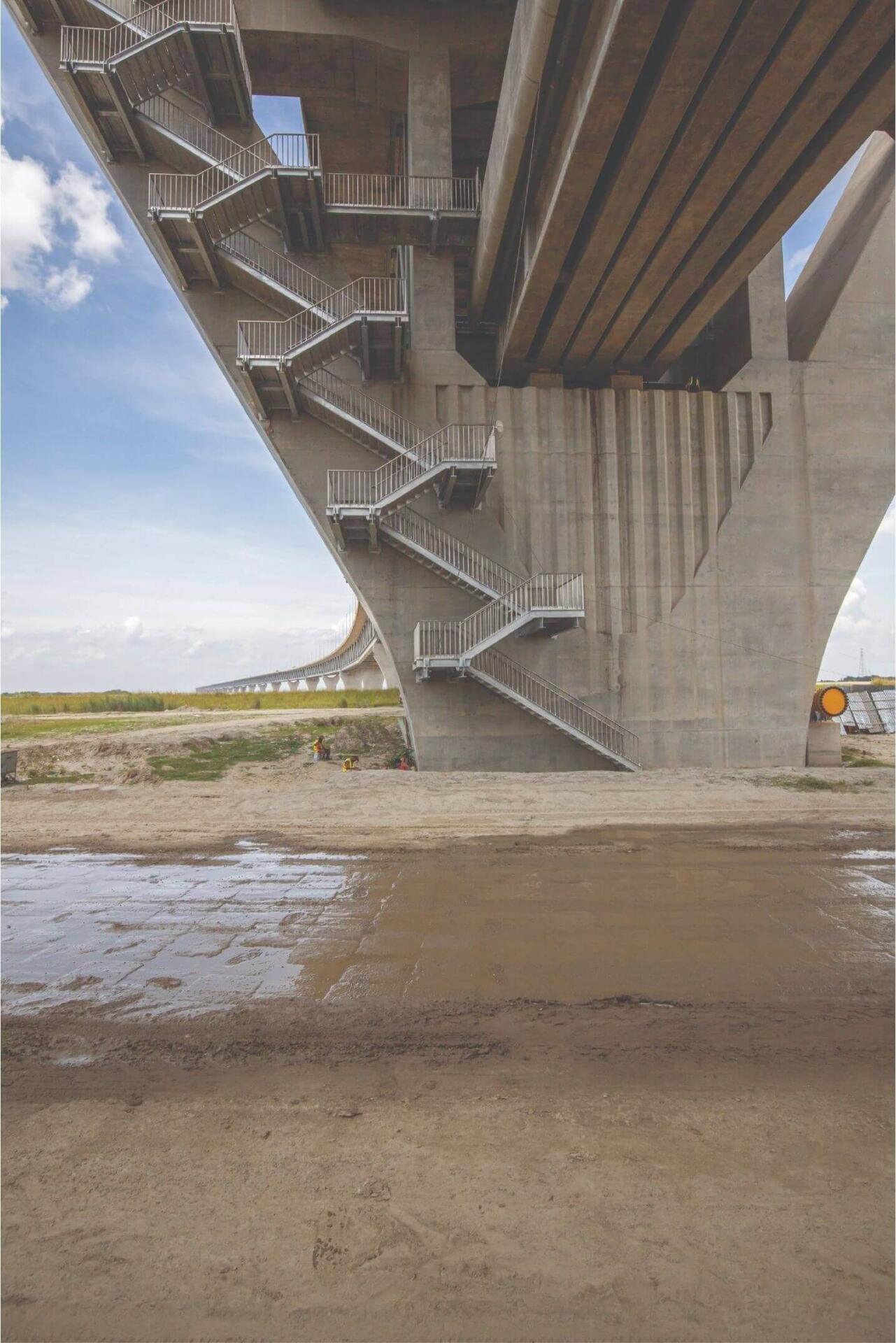
In fact in 2019, Sheltech Group established the country’s largest ceramics industry in the southern district of Bhola. The company invested more than Tk 7 billion taking advantage of local natural gas and cheap land with the hope of opening of the Padma Bridge in 2022. Now, Sheltech is also planning to set up a non-denim garment factory in Bhola, said Engineer Kutubuddin Ahmed, chairman of the group. “We are now looking for land to set up a ready-made garment industry in Barisal. After the inauguration of the Padma Bridge, investing in the south is the most promising one,” he added.
Chini Tikri the inaugural murals the inaugural murals
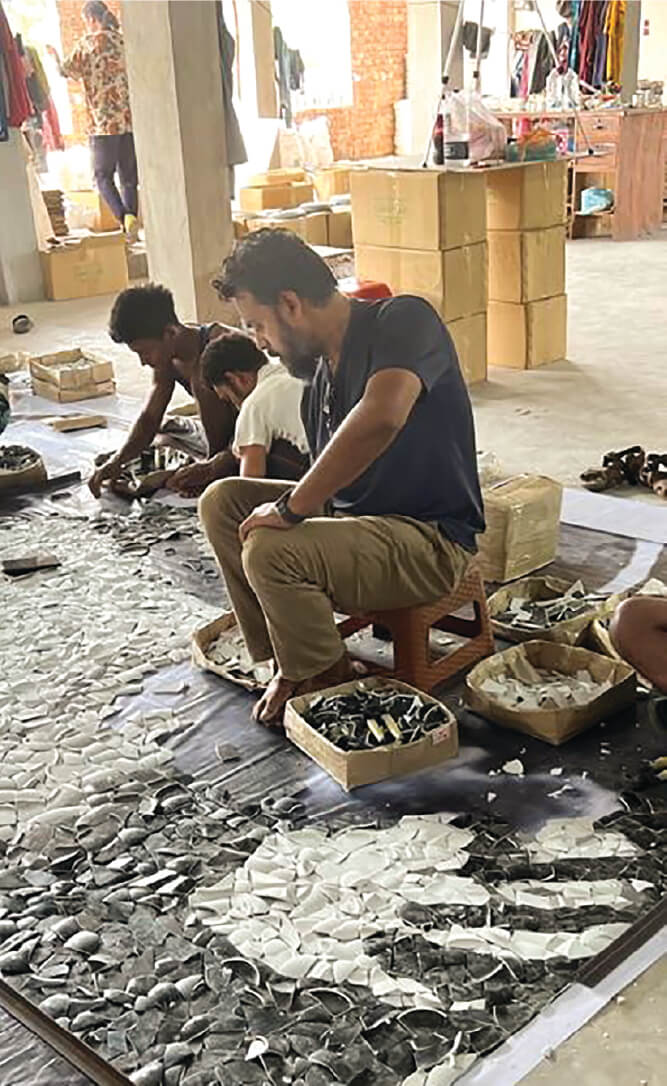
One of the two spectacular installations at each end of the Padma Bridge is its inaugural mural – which has been constructed by using 15,000 ceramic plates. The portraits of Father of the Nation tbreaking these 37 coloured plates into ‘Chini Tikri’. One was the dreamer of Padma Bridge and the another one is its implementer. As the ceramic plate is broken and made, it starts to sparkle when the sun shines on it. These ceramic plates are hammered and broken into about half a million pieces. Then different colours of the pieces are arranged one after one to create two beautiful portraits. Designed by architect Fazle Karim Shishir of Drishik, the two murals were created by artists Ashraful Alam Riaz and Didar Ul Alam. Both are graduated from the Fine Arts Institute of Dhaka University.
The 90-feet-long and 45-feet-high mural at the Mawa end was done by Didar Ul Alam and the 72-feet-long and 36-feet-high mural at the Janzeera end was done by Ashraful Alam Riaz. They told Ceramic Bangladesh that at first the designer thought of making this mural with ceramic tiles, but later they chose ceramic plates of the highest quality considering the bright colour and durability. A total of 15,000 plates of 37 types of colours have been used here. Among them, 7 types of coloured plates are used to display black and white portrait of Bangabandhu. And 30 types of coloured plates are used to produce colourful portrait of Prime Minister Sheikh Hasina. All of these ceramic plates are customised. Because such a variety of colour plates are not usually produced by ceramic companies. Artisan Ceramics made 8,000 plates used in the Mawa end mural and Monno Ceramics made 7,000 plates used in the Janzeera end mural. This construction work was completed in two months by two separate teams of 50 people, working 24 hours a day, after last Eid-ul-Fitr. No bigger mural has been made in Bangladesh so far.
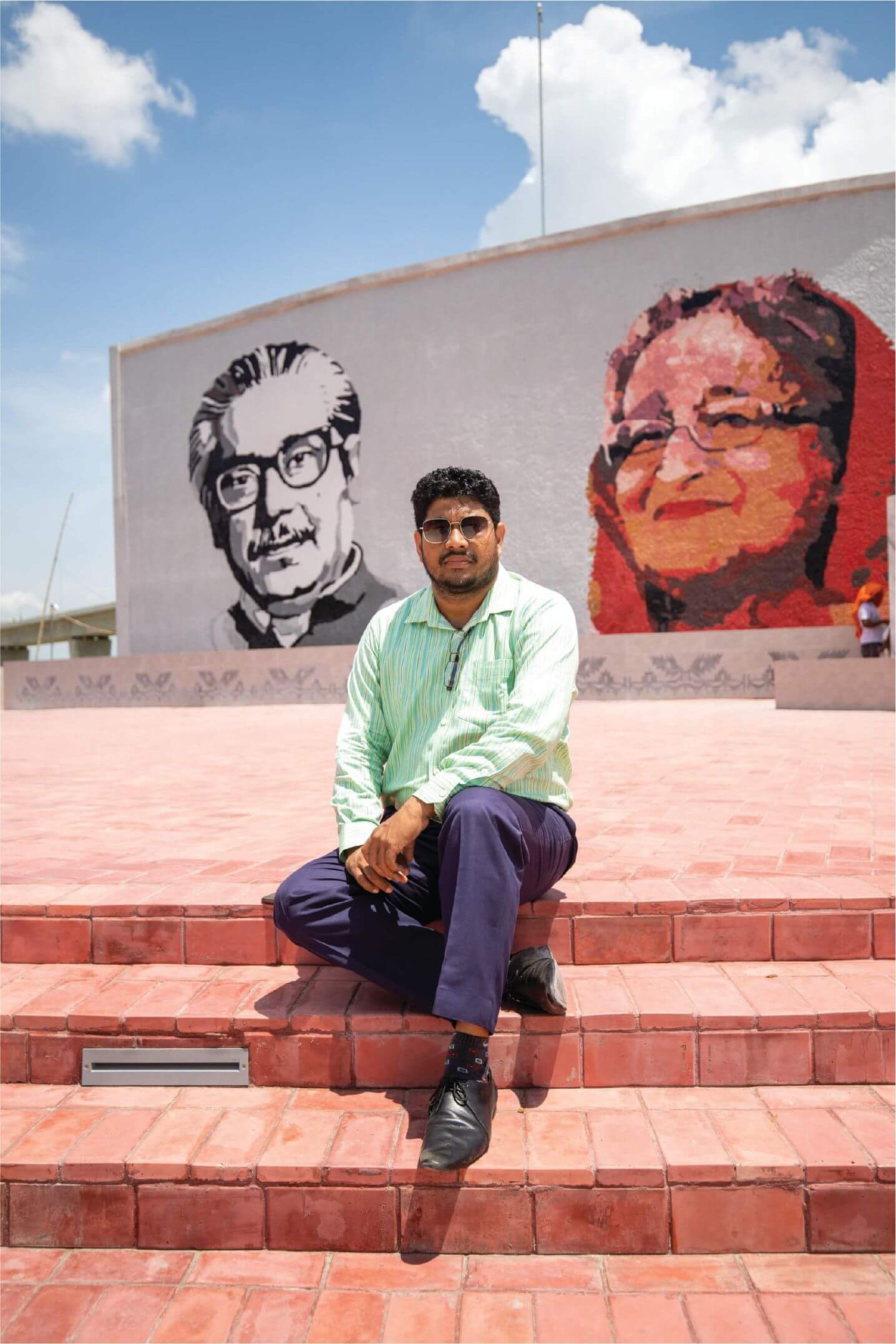
Artist Ashraful Alam Riaz, Managing Director of Nakshatra Sculpture, said that they first created a special studio for this work. There, the portraits of Bangabandhu Sheikh Mujibur Rahman and Prime Minister Sheikh Hasina were arranged step by step and set with white cement on the walls of both banks of the Padma. It is arranged like a puzzle game. It is called “Chini Tikri”, he said adding that this is an oriental style and this kind of artwork is usually seen in the ancient mosques of Bengal.
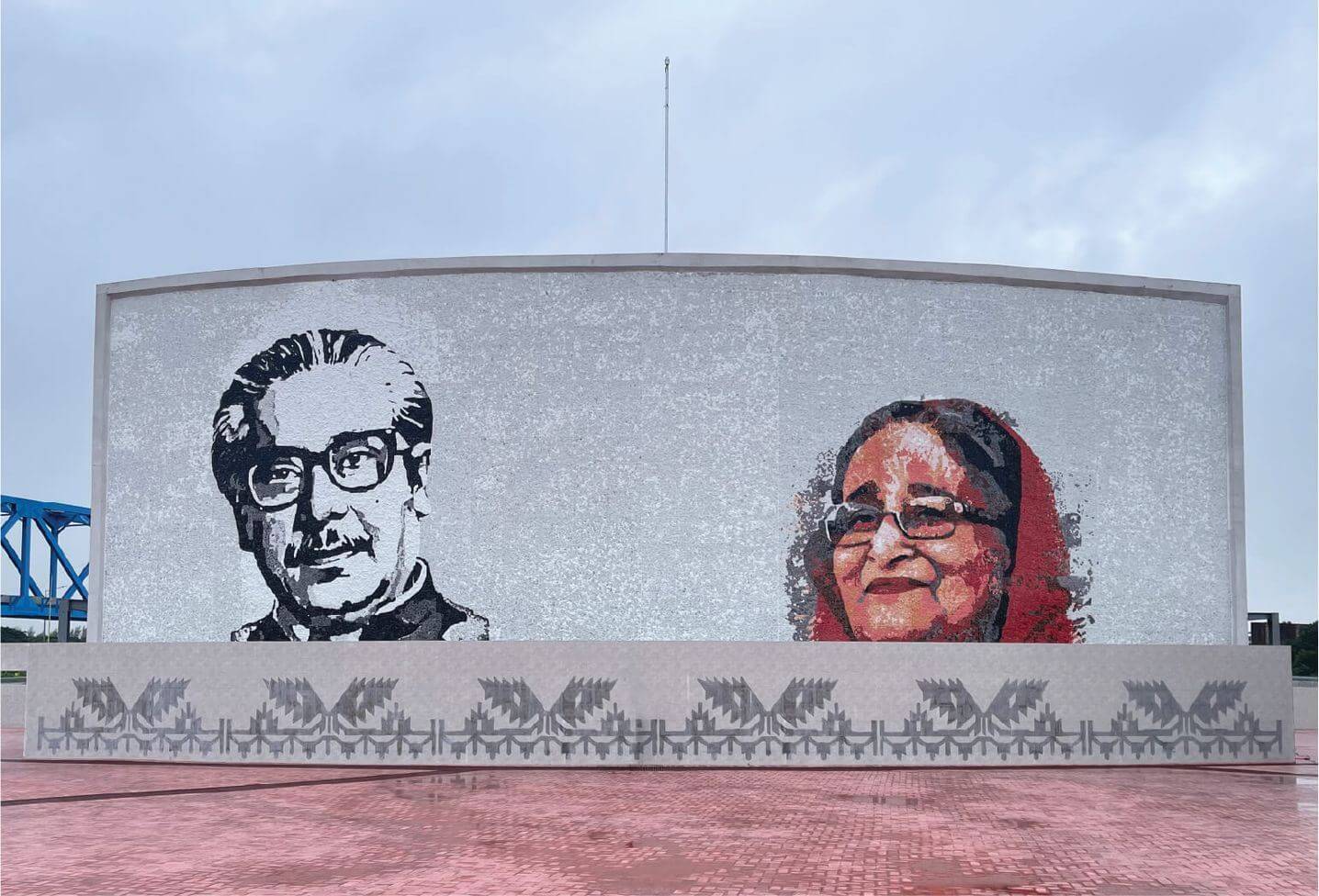
Explaining the theme of the two murals, artist Didar Ul Alam, director of Lay-Outs Interiors, said, “It is tradition. The two pictures depict two different times and two generations of leadership in Bangladesh. Both father and daughter have contributed to this bridge. Bangabandhu, the architect of Bangladesh and the visionary of the Padma Bridge, is now a part of history. So the portrait is kept in black and white. Moreover, Bangabandhu’s period was also black and white. His clothes were also black and white. And the portrait of his daughter Prime Minister Sheikh Hasina wearing a Jamdani saree, who made the Padma Bridge a reality, is colourful.
Because she is the next generation representative of colourful times. Moreover, she has also been able to paint his time with flashes of development. She also painted her father’s dream. On the other hand, Jamdani is Bangladesh’s own brand. So Jamdani’s craftwork has been highlighted under the portraits as well. Alongside the two murals, there is another sculpture of the national fish of Bangladesh and Padma River’s special brand of Hilsa. It is a flock of 14 Hilsa by Sculpter Shyamal.
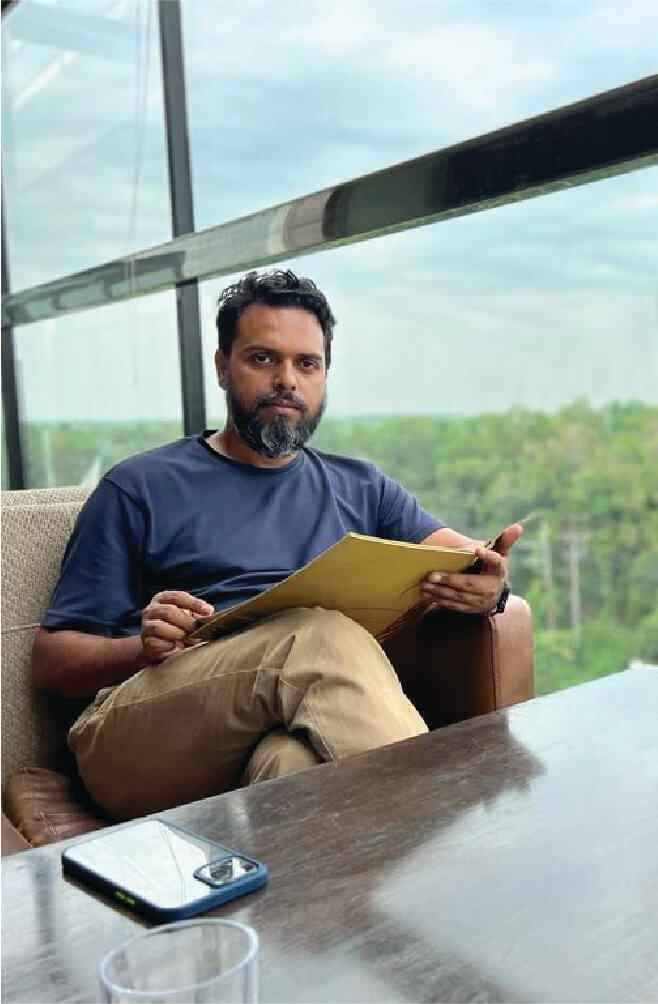
Expanding Housing Projects

Housing projects are being undertaken on a large scale to provide residential facilities in areas around the Dhaka-Mawa-Bhanga Expressway. Real estate companies and individuals are implementing hundreds of residential projects in areas from Postogola in the capital Dhaka to Mawa and beyond to Shibchar in Madaripur and Bhanga in Faridpur. The companies are also selling plots and started building flats and duplex houses. RAJUK is also developing a big residential project named ‘Jhilmil’. They are also ready to build a big park on 450 acres of land in Keraniganj.
The demand for housing among the commoners is increasing in these areas in view of natural beauty of the areas. In Munshiganj, Shariatpur, Madaripur and Faridpur districts, a significant number of projects, hi-tech parks with small and large industries are likely to be implemented. Housing demand may also increase as a result. Land adjacent to roads and highways is getting costlier.
REHAB President Mr. Alamgir Shamsul Alamin said, “Many housing companies had taken up the projects before the Padma Bridge work started. Opening of expressways and bridges would increase civic amenities in those areas. Four districts across the bridge will come closer to the capital Dhaka.” He said about 200 REHAB member companies are implementing projects in these areas. Over time, the demand for luxury housing in these areas will increase and Dhaka city will now be expanded towards the south, he added.
District Commissioner (DC) of Munshiganj Kazi Nahid Rasul said most of the housing projects are currently being implemented in Munshiganj adjacent to Dhaka. He predicted that another City Corporation of Dhaka may be established in this region in the near future and Detailed Area Plan (DAP) of RAJUK will expanded to Mawa. The official pointed out that most of the buyers of plots and flats in these areas are businessmen. Also expatriates of Munshiganj, Shariatpur, Madaripur, Faridpur and Barishal have joined the race to make their houses in the expressway areas. Government and private employees are also buying.
Economist Dr. Ahsan H. Mansur, Executive Director of Policy Research Institute (PRI), said that the rate at which residential projects are being built around the Padma Bridge will play an important role in changing the economy of the said areas. In the next 7 to 8 years at least one million new people will start living there. Markets will be created, production will increase, new employment will be created and marketing of products produced in the area will be facilitated, he said. Various educational and medical institutions will be built around the housing projects.
BEZA Executive Chairman Sheikh Yusuf Haroon said setting up of industries will start soon in two economic zones being built in Mongla and Paira. A project proposal has been prepared to establish an economic zone with about 800 acres of land near Mawa in Nawabganj, Dhaka. If these initiatives are implemented, the planned industrialisation in the region will be possible. More than 10 million people will be employed in this region.
Bangladesh Investment Development Authority (BIDA) has already started working for major investments in power, tourism, agriculture and ICT sectors. Gopalganj and Faridpur are two major industrial cities. Construction of Tantpalli (weaving village) in Madaripur is also going on. Large industrial groups are buying land in various districts including Faridpur, Shariatpur, Madaripur, Magura, Gopalganj, Barishal, Khulna, and Jessore to set up factories around the highway.
Making of the Bridge
The project director of Padma Multipurpose Bridge Engineer Md. Shafiqul Islam said crossing Padma, one of major rivers on earth, has always been a challenge. A lack of connectivity has prevented timely and effective access to medical care, education, market activities and people’s mobility. There was about 5 per cent higher rate of poverty in the south due to lack of connectivity and the region economically lagged behind the rest of the country. That’s why the government initiated the Padma Bridge construction despite financial challenges. The bridge is connecting the country’s south-west part along with two sea ports – Mongla and Paira. The shape of bridge geometry takes the English alphabet ‘S’.
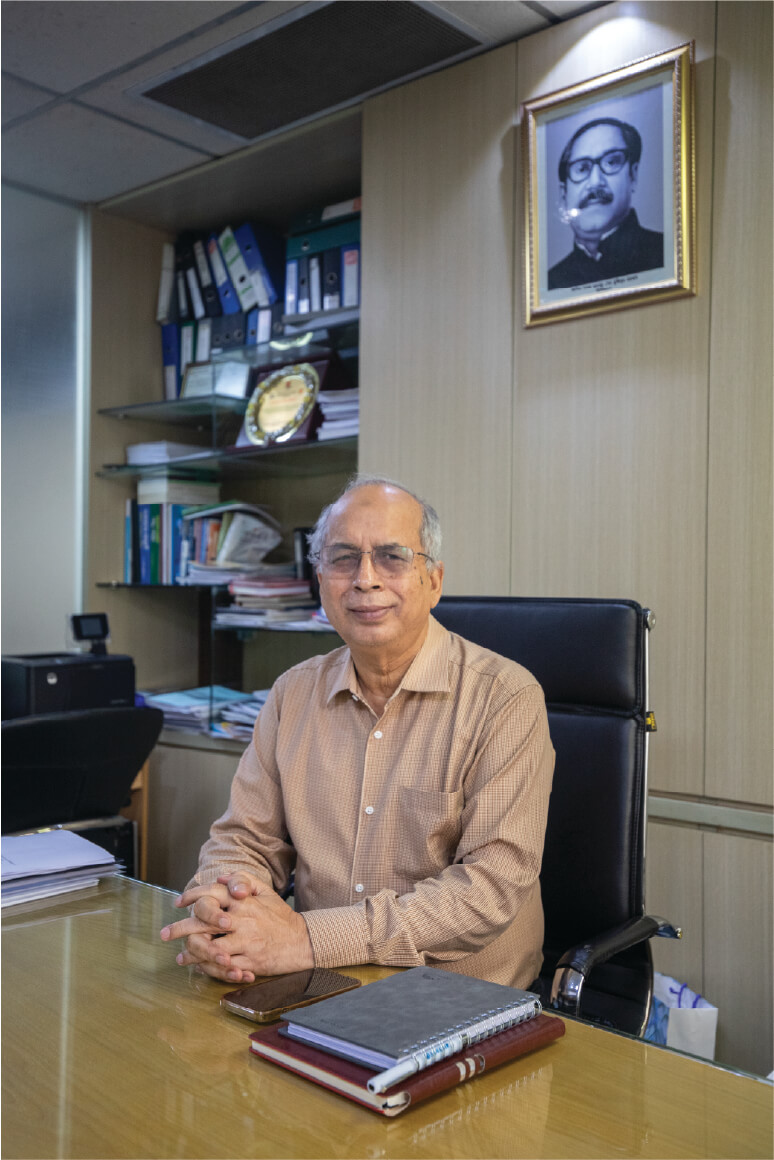
Preliminary preparatory work for the construction of the Padma Bridge began in 1998-99 through a government-funded pre-feasibility study. It recommended a full feasibility study. JICA was assigned to conduct the feasibility study in 2003 and recommended the Mawa-Janjira point as a suitable site for construction of the Padma Bridge. The Road Master Plan prepared in 2006 included construction of Padma Bridge as a high priority project. The government of Bangladesh approved the project and took steps to expedite its implementation by indentifying it as a national priority project for the initial phase. Prime Minister Sheikh Hasina laid the foundation stone of PMBP on 4 July 2001 at Mawa. The design work of double decker Padma Bridge was completed in 2011 by MAUNSEL-AECOM JV with the funding of the Asian Development Bank. 10 workers died while building this bridge. Padma Bridge will also establish the missing link along the Asian Highways and Trans Asian Railway enhancing the regional connectivity.
Economic Impact
In a study report prepared by the design consultant Maunsell, the bridge’s benefit-cost ratio (BCR) was estimated at 1.6 per cent and the economic internal rate of return (ERR) at 18 per cent. The bridge is also expected to reduce poverty by 0.84 per cent and contribute 1.27 per cent to GDP per annum. The time required for Dhaka’s communications with 21 southern districts would come down by 2-4 hours. The direct connectivity with the capital helps expand trade and commerce, ease supply of raw materials and industrialisation.
According to the 2010 estimate, 12,000 vehicles were crossing the Padma river everyday by ferry. The traffic will be doubled in 2023, and the number of vehicles will increase by 7-8 per cent every year. According to the forecast of the JICA, by 2025, 28 thousand vehicles will cross the Padma Bridge every day. In 2030 it will stand at 35 thousand and by 2050, vehicles of 67 thousand will run over the bridge.
Padma Bridge will be a company
Padma Bridge, a project of the Bridges Division, will be managed and maintained by a new company at the end of the project period next June 2023. The bridge authority has applied to form a company styled ‘Padma Bridge Operation and Maintenance Company Limited’ to be wholly owned by the government. Currently, Korea Expressway and China’s Major Bridge Engineering Company (MBEC) are managing the maintenance and toll collection of the bridge. They have been appointed for five years for Tk 7 billion. Even if the company is formed, these two foreign companies will be in charge of operating and maintaining the bridge as per contract.
Although the Padma Bridge was built with domestic funding, the Ministry of Finance gave this money as a loan at 1 per cent interest. This loan has to be repaid in 35 years with the revenue collected from tolls. For this, the loan amount (interest and principal) will be repaid in 140 installments. Currently, on average, the income is about Tk 20 million a day. In 35 years, the income from this bridge is estimated to be more than Tk 900 billion. Currently, the cost of Padma Bridge project without rail link stands at Tk 302 billion. The cost may increase slightly by the next year.
Agri-based Businesses and Industry Potentials
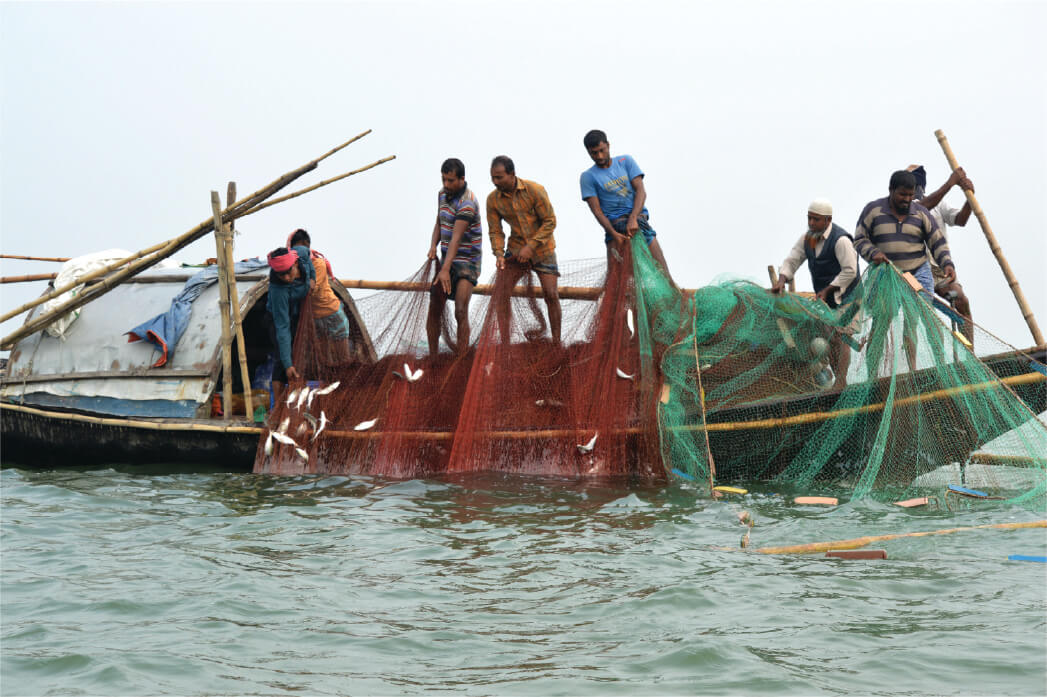
Pran-RFL Group, a leading conglomerate, has 23 factories in 20 locations in the country. However, it does not have any production hub in the south-western region. Now PRAN-RFL Group is planning to set up food processing factories and light engineering units in the region, said Kamruzzaman Kamal, director of PRAN-RFL Group.
Around 50 major companies such as Meghna Group, Hameem Group, East Coast Group, Mir Group and Indo-Bangla Pharmaceuticals are planning to set up factories in the southwestern region. TK Group is also planning to do agro-based industries in the southern region. Thanks to the construction of the bridge, the company has set up LPG cylinder and edible oil manufacturing plants. Mohammad Amirul Haque, Managing Director of Seacom, a subsidiary of TK Group, said the southern region where Paira and Mongla ports are located, is becoming a good place for business. “Now, thanks to easy communications with the capital Dhaka, we are planning to set up agriculture-based industries.”
The East Coast Group wants to capture export market by processing agricultural and fish products of the southern region. Group Chairman and Managing Director of MJL Bangladesh Limited Azam J. Chowdhury mentioned that due to infrastructure deficiencies, many produces including onions, potatoes, pulses, almonds, mustard and vegetables could not be processed and farmers did not get fair price even despite their export potentials. “After the construction of the Padma Bridge, the most promising area for the southern region is agriculture. Now, we will set up silos around Dhaka and store the products there. If the gas connection is available, the processing plant can be built,” he added.
Nitol-Niloy conglomerate imports completely knocked down (CKD) of cars from India and assembles them in Gazipur and Kishoreganj plants. It is planning to set up factories in Jessore and Barishal, said Abdul Matlub Ahmad, Chairman of Nitol-Niloy Group. “We are currently operating an assembling plant for bus-trucks and minibuses in Jessore. I am thinking of expanding it after the Padma Bridge inauguration.” He may set up food processing factories in the southwestern region given the availability of farm produces. “We are looking for land in Barishal and Shariatpur. Once gas connection is there, food processing unit will be set up there.” Matlub Ahmad, a former president of FBCCI, said almost all major industrial groups are interested in setting up factories in the south. “So, the Barishal-Faridpur-Gopalganj will be the next manufacturing hub after gas connection.”
Another business leader and former president of FBCCI Mir Nasir Hossain said that his company Mir Group has set up various factories in Faridpur to take advantage of direct road communications with Dhaka. Construction and housing industries will also be developed in the region, he added.
Hameem Group MD and ex-president of FBCCI AK Azad said he is planning to expand his garment factory in the
southern region. A university of international standard and another specialised hospital with pharmaceuticals plant will also be set up in the region, he said.
Mohammad Wahid Mia, Vice Chairman of Karim Group, said they have built a cold storage, large jute mill and textile factory in Faridpur region. Now they are planning to construct a five-star hotel in addition to investment in other sectors. Transport business also lucrative now.
Opsonin Pharma set up the country’s largest pharmaceuticals plant on 500 acres of land in Barisal in 2020 spending Tk 5 billion. Its MD Abdur Rouf Khan said more than 1,000 people would be employed in this factory. He said after the construction of the Padma Bridge Barishal is now a suitable place to build industries and factories. “We’re investing heavily here because of the great potential.”
Local entrepreneurs are also show interest in investing in the region to reap the benefits of the Padma Bridge. One of them is Jazira Upazila Parishad Chairman Mr. Mubarak Ali Shikder. He is building a large cold storage named Shikdar Himagar on 10 bigha land in Kazirhat area of Jazira upazila. He said, “A lot of tomatoes grow in this area. I will preserve them for export.”

Contribution of domestic construction materials
Padma Bridge built with domestic funding, using indigenous materials has increased the capacity of industrialists in various sectors of the country manifold. In addition to the supply of domestic products to this bridge project, the production capacity of steel, cement and many other sectors has also increased. A large part of the supply of construction materials for bridges and expressways is done by local manufacturers and suppliers. Some 0.75 million tons of cement and 0.1 million tons of rods and steel were supplied by local manufacturers for the 6.15 km long and 22 meter wide bridge, which creates additional employment opportunities and contribute to the local economy through increased investment and production.
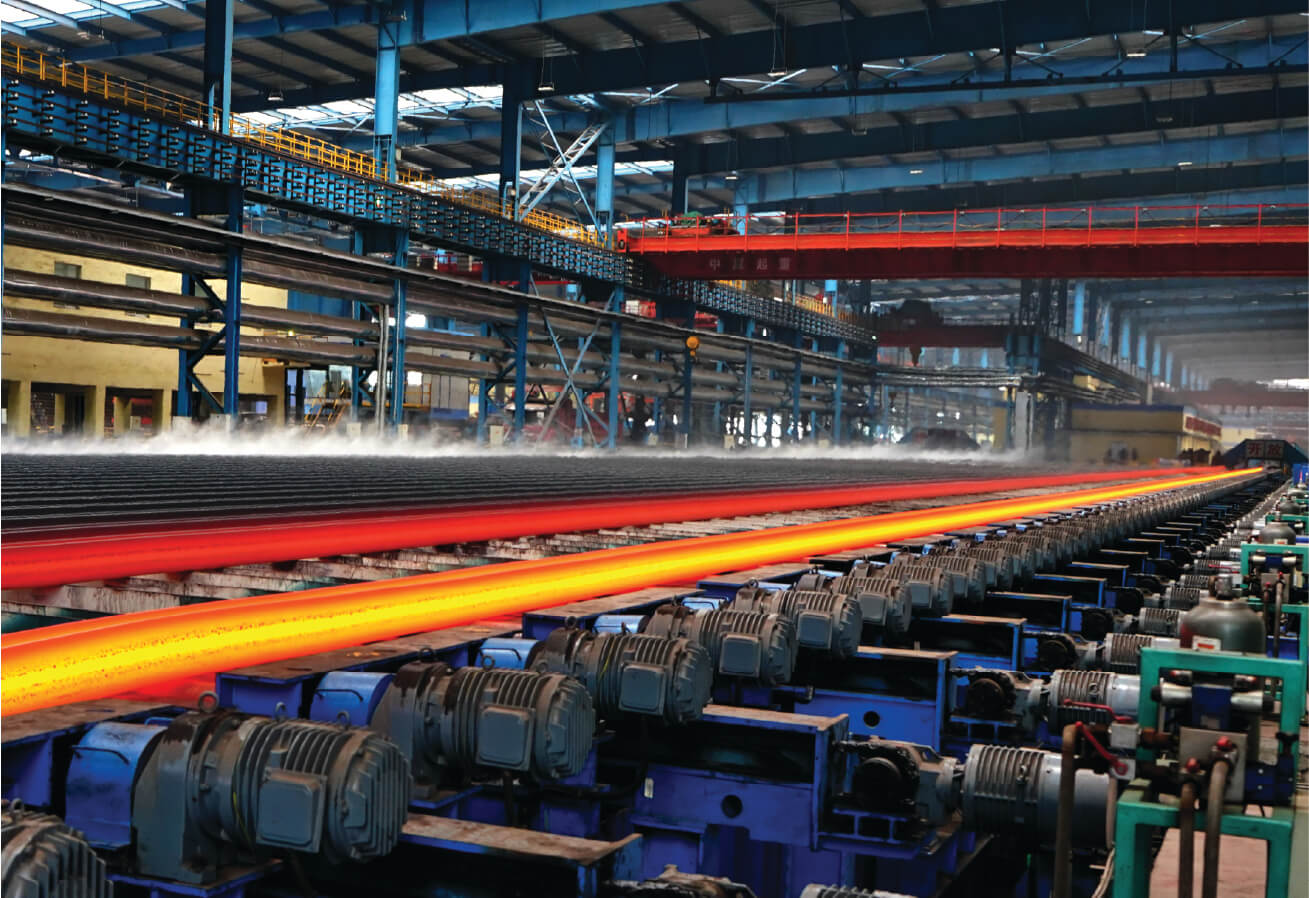
The main contractor of the bridge is China Major Bridge Engineering Company Limited and another is Sino-Hydro Corporation. Apart from this, Abdul Monem Limited of Bangladesh has worked with KAC of South Korea and HCM JV of Malaysia. Mohammad Shafiqul Islam, Project Director of Padma Bridge, said that Bangladesh had three big contracts on Padma Bridge project – main bridge, river training and approach roads. The work of Padma Bridge project is divided into five parts. These are main bridge, river training, construction of connecting roads on both banks and other infrastructure. Chinese contractors are engaged in the main bridge and river training, and Abdul Monem Limited (AML) of Bangladesh and a Malaysian company on the approach road. Due to the lack of capacity in Bangladesh, foreign contractors had to be brought in. Although the steel, cement, ceramic and sand are from Bangladesh. Local stone was not used in the project, because the special type of stone is not available in Bangladesh. The main structure of Padma Bridge is steel. Almost all of the steel materials and cobblestones used in the bridge came from various countries, including China. But the demand for domestic materials like rods, cement, ceramic, geo bags and sand has been met through various companies in Bangladesh. Officials associated with the Padma Bridge project feel that the use of materials made in Bangladesh in a major project like the Padma Bridge has added a different dimension to the local construction materials industry. They said that at least 25 percent of the materials used in the Tk 302 billion bridge project came from within the country.
The longest bridge in Bangladesh has provided an opportunity to test the quality of local construction materials at home and abroad. It has been proved that Bangladesh can also produce quality products. Over 30 materials have been used in the main bridge. These include local rods, cement, sand, bricks, electric cables, pipes, ceramic, bitumen, and geo bags. The contribution of local industries is high in river training, supply of rods, cement, ceramic, sand and stone chips, construction of approach roads on both sides of bridges and other structures related to mega projects. Not only steel and cement, but also for electricity and lighting and various installations and sub-stations on both sides of the Padma Bridge, domestic cables have been used. Locally made pipes have also been used in Padma Bridge. Three hundred and fifty thousand tons or 0.65 million cubic meters of sand has used in the bridge with more than 2,000 tons of bitumen. About 40 million geo bags weighing 800 kg, 250 kg and 125 kg have been installed to protect the river banks. There are 15 million of bricks used on the connecting road. Some 0.28 million meters of electric cables and 0.12 million meters of pipes have been used from the country. Some 2.1 million tons of stones of 5-20 mm have imported from India, Indonesia and the UAE. Some 1.1 million cubic meter of stone for river training and 1.0 million cubic meter of stone for the main bridge were used. China’s Sino-Hydro Corporation has taken more than 40 million geo bags from the local company DIRD Felt Limited for river training. Bangladesh, China, India, UAE, Luxembourg, Singapore and Australia have provided other materials for the main bridge work. Apart from this, equipment from Germany, the United States, the United Kingdom, Belgium, the Netherlands and many other countries have been used for bridge work.
The cement, steel and construction sector industrialists involved in the Padma Bridge project work shared their experiences, feelings and future plans. Managing Director of Bangladesh Steel Re-Rolling Mills (BSRM), Ameer Ali Hossain, said that 95 percent of the rods used in the Padma Bridge were supplied by them. He said three things are given priority in the supply of materials in big projects – project defined quality standards, best service and timely delivery. All three have passed BSRM standards. For the first time in South Asia, BSRM has manufactured 50 mm rods for supply to Padma Bridge. For this, new investment had to be made in the factory. The use of indigenous materials in this project means more glory. The 40 mm BSRM rods are used in 294 piles of the bridge. The world’s deepest piles have also been built on BSRM rods. Due to their continuous efforts the Chinese contractors did not have to import rods from outside for this project. BSRM is now manufacturing rods as per international standards by supplying rods to this large project. BSRM has acquired the ability to manufacture rods according to the standards of any developed country. This has been possible due to maintaining quality standards at every stage of production, starting from raw material procurement.
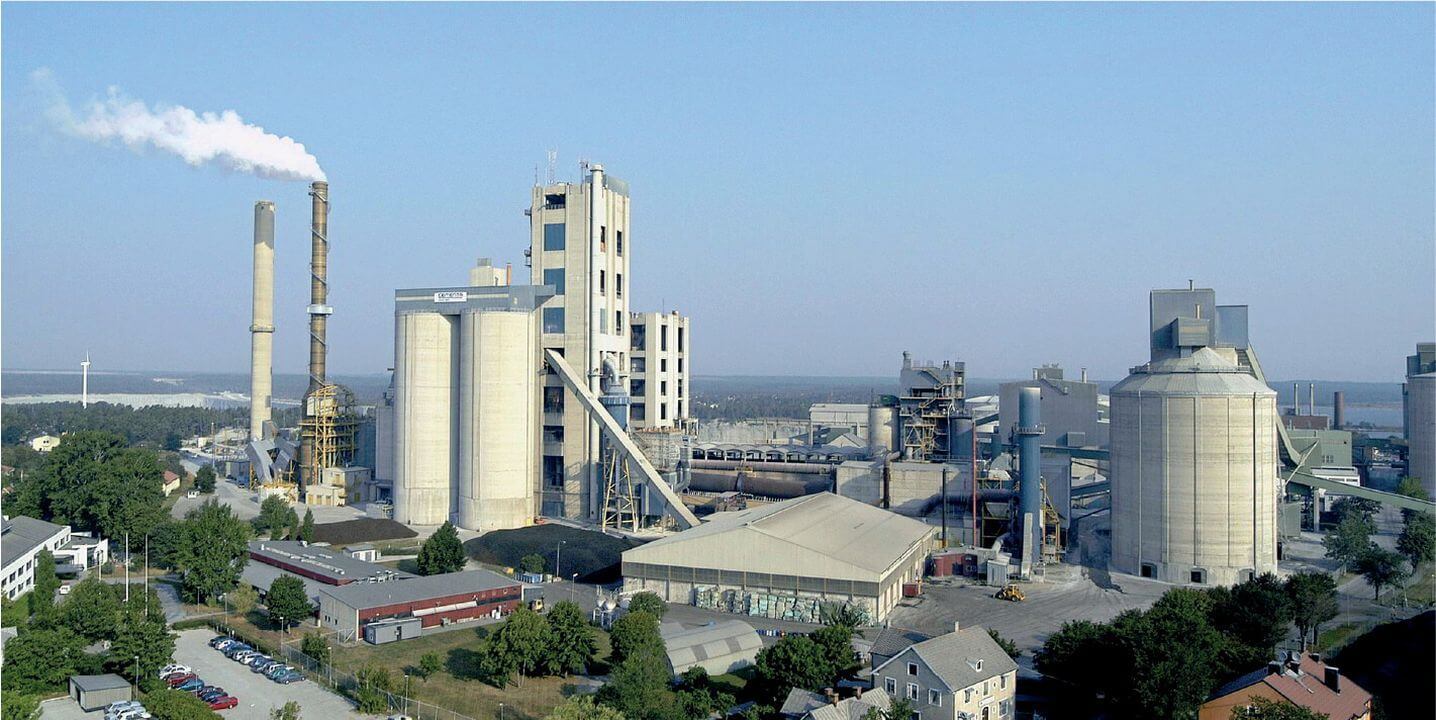
The focal point is Economic Corridor
Professor Dr. Mostafizur Rahman, distinguished fellow at Center for Policy Dialogue (CPD), said that Padma Bridge will play a special role in regional trade. “Goods from India can be directly transported to capital Dhaka and Chattogram through Padma Bridge. It will expand the import-export trade. If communication is easy and distance is reduced, time and cost will also be reduced.” Padma Bridge will not only be a prerequisite for economic growth but also for inclusive development and will reduce regional disparities, said the economist.
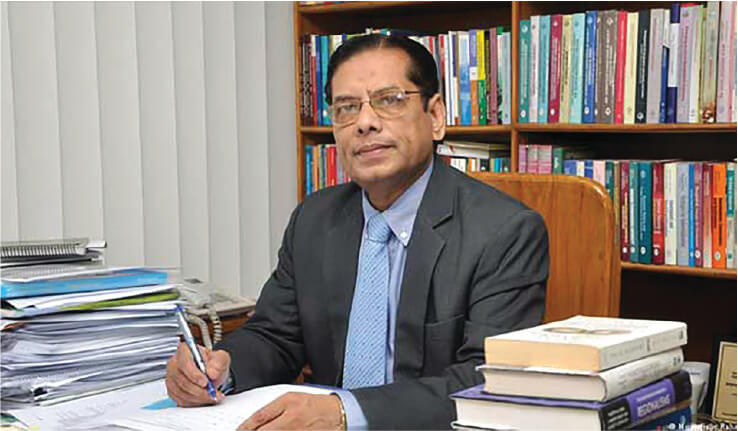
In 2012, when the decision was finalised to build the Padma Bridge, Bangladesh’s GDP was $135 billion. Foreign exchange reserve was $10 billion. Export earnings and remittances were less than 50% from FY 2022. He said the role of this bridge will be very important in terms of inter-regional communications, especially in view of the Bangladesh-Bhutan-India-Nepal (BBIN) Motor Vehicle Agreement. The Padma Bridge and Bangabandhu Highways will become an important corridor of regional and sub-regional economic activities in the context of the implementation of these projects – connectivity with Mongla and Paira ports, rail connectivity at both ends of the bridge, trans-Asian highway and trans-Asian rail connectivity. Due to international rail connectivity, GDP will increase by 1% more in the future. This contribution will come from investment and economic activities that will follow with the benefits of bridges and roads, goods and services to be produced, time saved and cost-effective transportation, and enhanced competitiveness. To realise this potential, it will be necessary to focus on these investments and multi-purpose economic activities oriented towards the transformation from bridges to road corridors and from road corridors to economic corridors.
Mongla to be an Economic Hub
Mongla Port started its journey on December 1, 1950. The launch of the Padma Bridge is going to boost the port along with investment in industries in the region. Chairman of Port Authority Rear Admiral Mohammad Musa said that after opening of the Padma Bridge, the road distance between Dhaka and Mongla seaport is now only 170 km. Since the distance between Dhaka and Chittagong port and Paira port is longer, the import and export through Mongla will increase significantly. He said that a master plan has been prepared for Mongla port.
In the last year, 970 ships arrived in Mongla port, which has a capacity of handling 1,500 vessels. Work is underway to double it by 2025. Also the port is now fully equipped for handling gearless container ships. Two more new jetties are under construction. As navigability remains a challenge, the 130-km long port channel from the sea is being excavated to maintain navigability.
New industries are being built in this region, including in Mongla EPZ. Six cement factories and 14 LPG plants have been built around the port. Domestic and foreign investors are interested in setting up factories and investing here. In future, Mongla will be the economic hub of south-western region.
An upgradation project at Tk 60 billion has been taken to increase the capacity of Mongla Port. Excavation is underway for larger ships to arrive. This work will be completed by June next year. The Chairman also said that the distance from Bhanga Expressway to Mongla port is 120 km. This road should be upgraded to six lanes as soon as possible to handle the traffic pressure and the Khulna Airport must be completed. Also, the Khulna-Mongla railway work is going on.
Huge foreign & domestic investments required
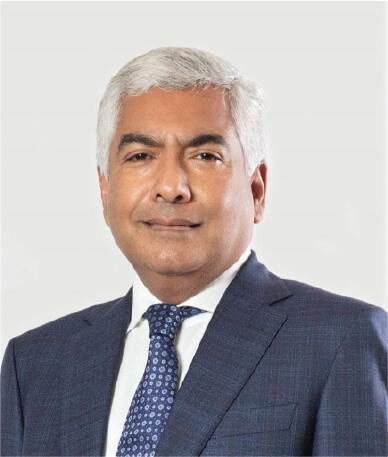
Federation of Bangladesh Chambers of Commerce and Industries (FBCCI) President Mohammad Jashim Uddin said that to ensure the positive impact of Padma Bridge, coordinated investment activities must be implemented. Timely, cost-effective and well-regulated implementation of these parallel initiatives will enrich the country with the positive contribution of the economic corridor. For this, investment-friendly environment should be ensured, provision of single-window services should be ensured in the light of One-Stop Act 2018. Attracting foreign investment and domestic investment will require restructuring of initiatives and incentive structures. Initiatives should be taken to ensure trade facilitation, availability of labour and professional people with requisite skills and technical knowledge. River training, bridge management and safety provision will be an ongoing process, where necessary funding must be ensured. There are plans to build 17 Special Economic Zones in 21 districts of the southern region along with private industrial parks around the bridge. Many entrepreneurs are already planning to set up not only local market-oriented but also export-oriented industries. Thanks to easy movement of goods and services, consumer, producer, exporter, and service sector-oriented activities will create new opportunities and areas for collection of direct and indirect taxes by the government.
The construction of the internal ring roads, metros and the eastern bypass, necessary to coordinate the traffic congestion-free connectivity of the Dhaka metropolis with the Padma bridge and the expressway, should be completed as soon as possible. A new international Airport will be also established in this part of the country. To ensure the expected financial and economic returns from the Padma Bridge, these initiatives must be taken quickly.
After completion of these works, direct road, sea, rail and air communications will be established with Mongla. After the opening of this bridge, two land ports – Benapole and Bhomra – and two sea ports – Mongla and Paira – are expected to double exports and imports to and from India. The authorities are preparing to invest about Tk 100 billion to increase their capacity.
Padma Bridge Rail Link – A New Horizon of Communication

Bangladesh is planning to expand its railway not only for domestic purpose but also to connect with Trans-Asian Railway (TAR) through India and Myanmar, Padma Bridge Rail Link Project Director Engineer Md. Afzal Hossain told Ceramic Bangladesh. The rail link will provide a direct rail route from Dhaka to Jashore, Benapole, Khulna, and Mongla, the country’s southwest region by 2024. It will shorten substantially the distance between Dhaka and Jashore to 180 km, between Dhaka and Khulna to 212 km and between Dhaka and Bhanga to only 80 km. This rail link being set up at a cost of Tk 400 billion will become a vital railway corridor in terms of national and regional traffic demand. Construction of Broad Gauge (BG) rail track started from existing Dhaka (Kamalapur) station and connect through Gendaria, Keraniganj, Nimtola, Sreenagar, Mawa and then pass through lower deck of Padma Bridge to connect Padma Station, Shibchar, Bhanga Junction, Nagarkanda, Moksudpur, Moheshpur, Kashiani, Lohagora, Narail, Jamdia, Padmabila to Rupdia and Singia station. Then it will connect to Jashore, Khulna, Mongla and Benapole border.
The largest and most modern railway junction of the country is being built in Bhanga. This railway junction is being built in the style of developed countries. This junction station will connect the railways with the districts of southwestern region. There will be 20 rail stations on the Dhaka-Jeshore long railway. Sixteen stations will be newly constructed, and four old stations will be renovated and modernised. Economic benefits of the projects would include reduction in costs of operation and road accident and greenhouse gas (GHG) emissions. Furthermore, from 2030, expresses would be introduced to serve Barishal using the branch line with an aim to link Paira Sea Port and Kuakata. Maitree Express from Kolkata will also divert to the Padma Bridge, shortening the journey to the border which would reduce operating costs and passenger travel time.
In Bangladesh at present the maximum speed of train on broad gauge line is 80 km and meter gauge 60 km, but on this new broad gauge line the train will run at a speed of 120 km. Regarding single line for railways in the design of Padma Bridge, the project director said that maximum 25 pairs of trains will be able to cross through the single line of this bridge in 24 hours. Since the decision to run 3 pairs of trains per day from Dhaka to Bhanga or Faridpur from the end of next year is not likely to increase the frequency much soon.
However, in the future, if Kolkata, Khulna, Mongla and Paira ports are connected and freight traffic increases, there will be need to build another separate railway bridge on Padma like Jamuna with a double line. Stating that the railway toll on the Padma Bridge will not be too much, he pointed out that currently the Railway Department pays Tk 10 million per year for the use of the Jamuna Bangabandhu Bridge.
Written by Lamia Mehreen



